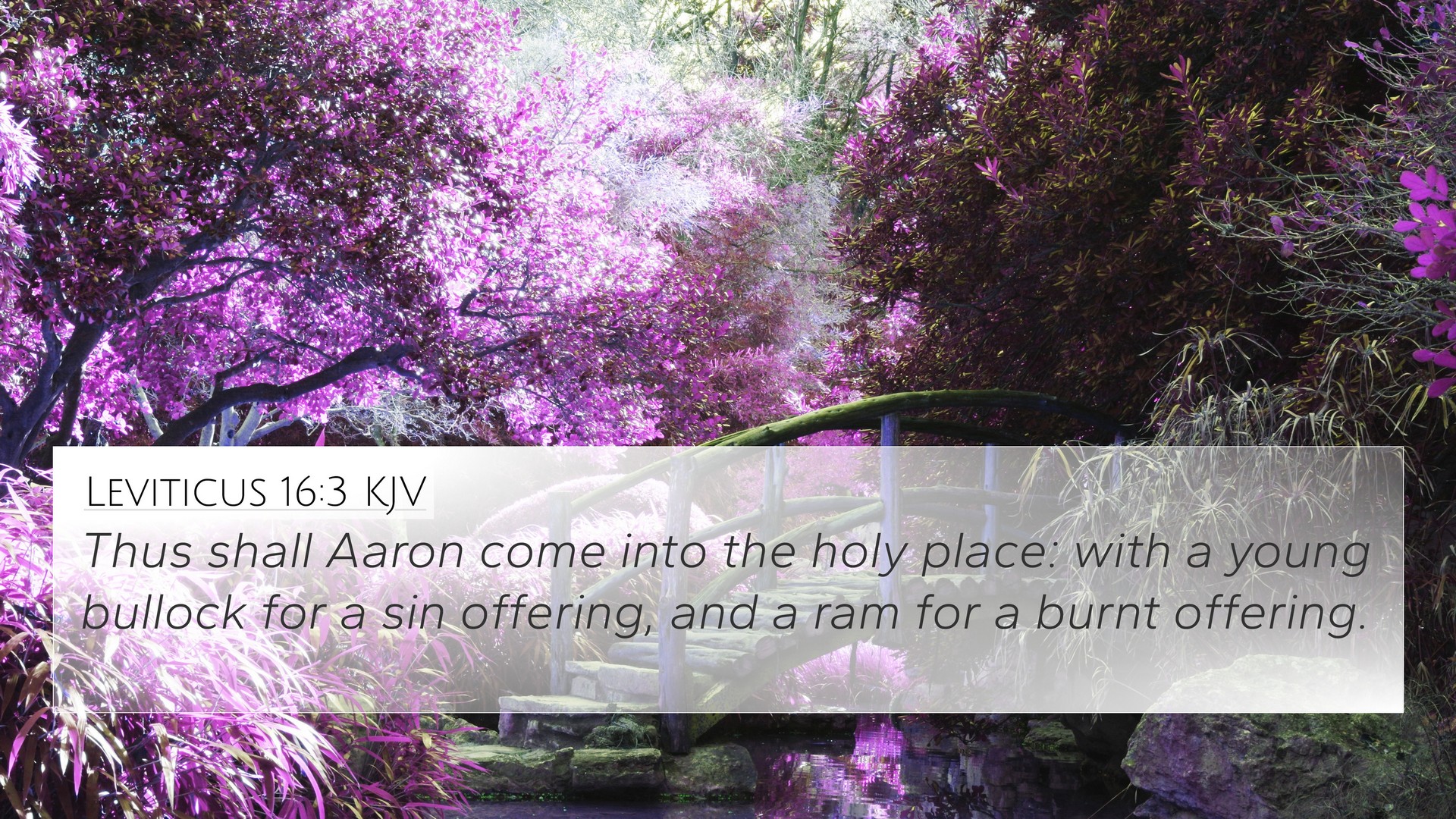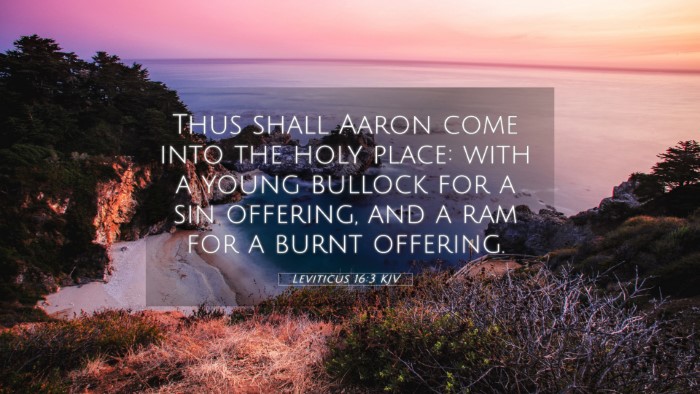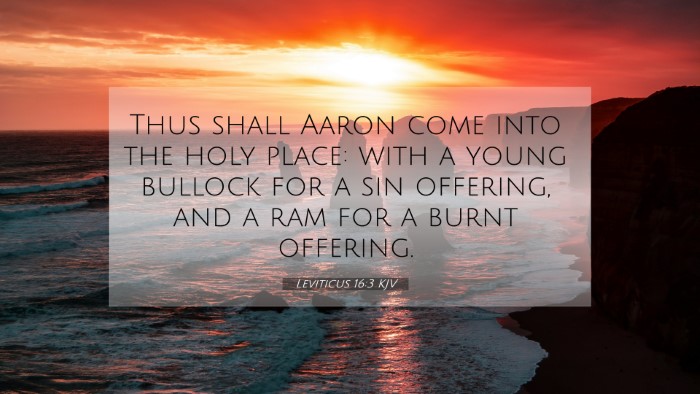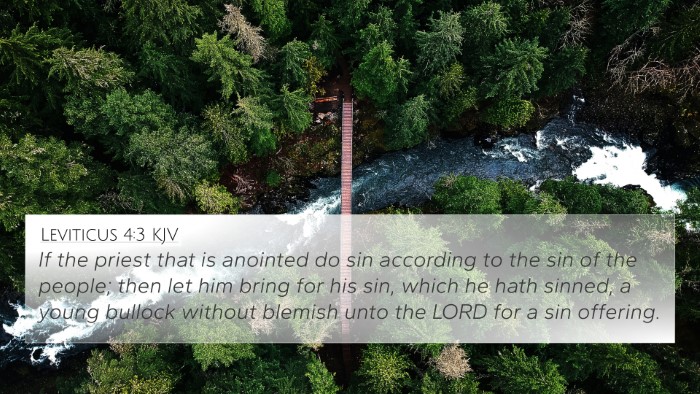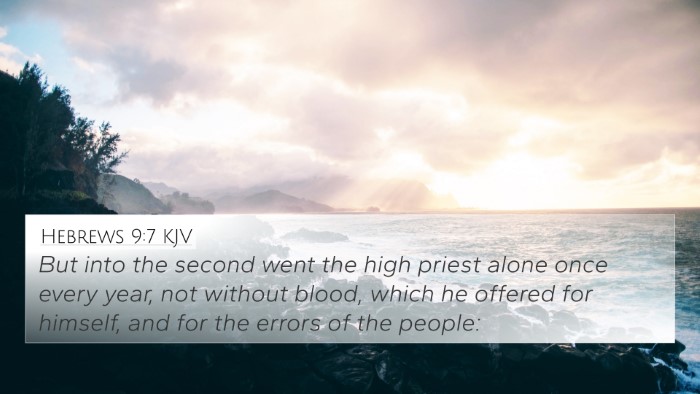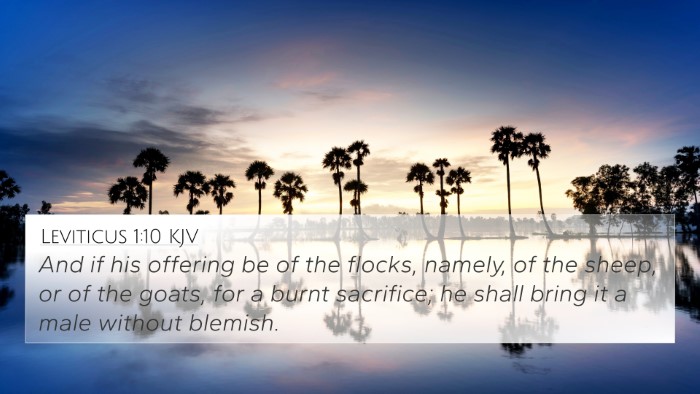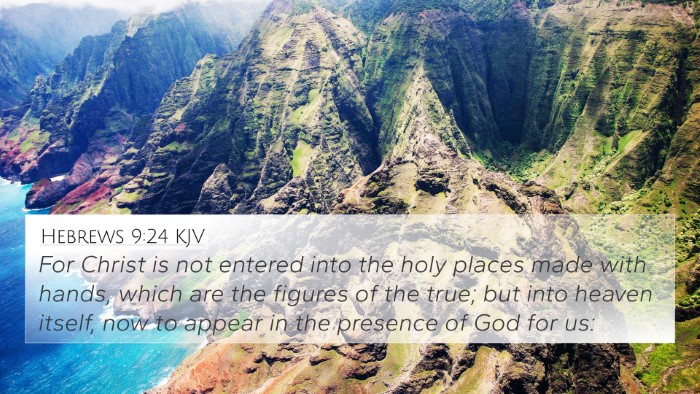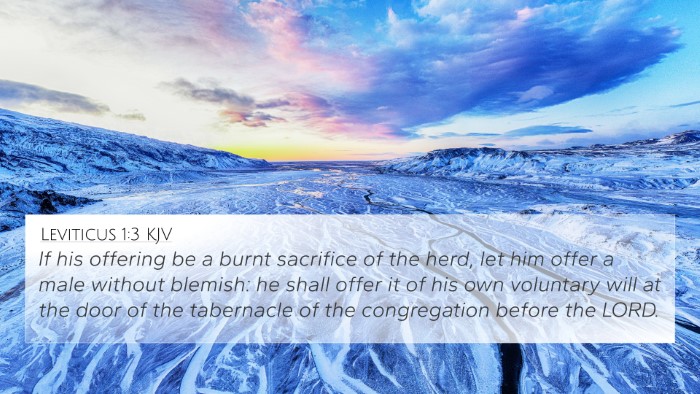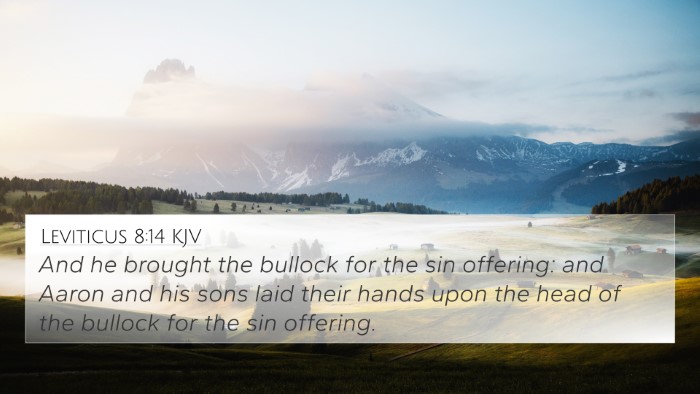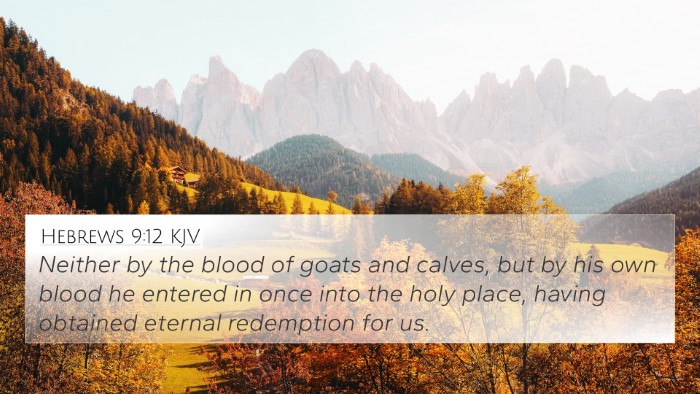Leviticus 16:3 - Meaning and Interpretation
Verse Reference: Leviticus 16:3 - "Thus shall Aaron come into the holy place: with a young bullock for a sin offering, and a ram for a burnt offering."
Overview of Leviticus 16:3
This verse is part of the instructions given to Aaron regarding the Day of Atonement, a crucial ritual in the Israelite religious calendar. It provides a framework for understanding the significance of sacrifices in the Old Testament and their implications for atonement and communication with God.
Commentary Insights
-
Matthew Henry:
Henry emphasizes the holiness of the act, highlighting that Aaron, as the high priest, must enter the holy place with specific offerings. This underscores the seriousness of approaching God and the atoning work required to stand in His presence.
-
Albert Barnes:
Barnes points to the symbolism of the offerings, with the young bullock representing sin and the ram signifying devotion. He notes the necessity of these sacrifices to reflect Israel’s dependence on God’s mercy and grace.
-
Adam Clarke:
Clarke elaborates on the types of offerings required, interpreting the practices as foundational for understanding sin and redemption. He insists that these rituals were not merely routine but pivotal in the relationship between God and Israel.
Theological Implications
The directives in Leviticus 16:3 speak to the broader themes of atonement, sacrifice, and divine justice. These concepts are vital for understanding the nature of sin and the means by which humanity can be reconciled to God.
Connections Between Bible Verses
The sacrificial system set forth in Leviticus has numerous parallels throughout the Scriptures, revealing a profound inter-Biblical dialogue regarding the necessity and role of sacrifice. Here are essential cross-references:
- Hebrews 9:22: "And almost all things are by the law purged with blood; and without shedding of blood is no remission." - This links the necessity of sacrifices to the theme of atonement.
- Exodus 30:10: "And Aaron shall make an atonement upon the horns of it once a year..." - This verse connects with the practices on the Day of Atonement.
- Leviticus 4:27-31: Discusses the sin offerings for individuals, expanding on the necessity for atonement.
- Romans 3:25: "Whom God hath set forth to be a propitiation through faith in his blood..." - This New Testament verse reflects back on the significance of blood sacrifice.
- 1 Peter 2:24: "Who his own self bare our sins in his own body on the tree..." - This emphasizes the fulfillment of sacrificial themes in Christ.
- Isaiah 53:5: "But he was wounded for our transgressions..." - A prophetic reference that connects to the sacrificial system.
- Numbers 29:7-11: Details additional offerings related to the Day of Atonement, reinforcing the importance of sacrificial practices.
Thematic Bible Verse Connections
Understanding Leviticus 16:3 requires recognizing its place within the broader themes of atonement, sacrifice, and God's holiness. These themes resonate throughout both the Old and New Testaments, culminating in the ultimate sacrifice offered by Jesus Christ.
Cross-Referencing Biblical Texts
Utilizing tools for Bible cross-referencing can deepen one’s understanding of how verses relate to one another. Here are some effective methods:
- Employing a Bible concordance to find themes and key terms that echo through scripture.
- Using a cross-reference Bible study guide to see how scriptures interlink for thematic studies.
- Engaging in Bible cross-reference methods to explore complex theological ideas across different books.
Practical Applications and Reflections
As individuals reflect on Leviticus 16:3, it becomes clear how ancient practices of atonement inform today’s understanding of grace and forgiveness in Christian theology. This verse encourages believers to consider their own approaches to God and the sacrificial nature of true worship.
